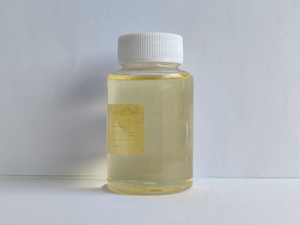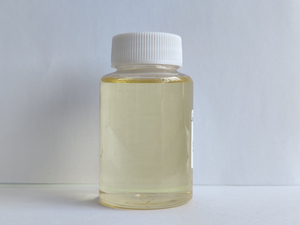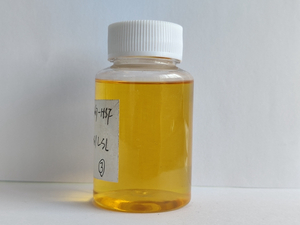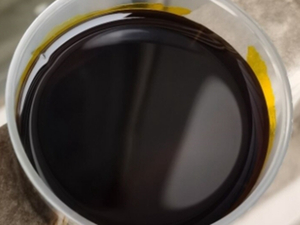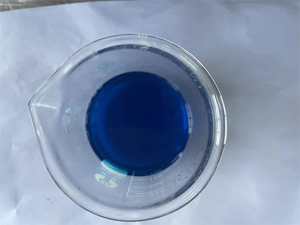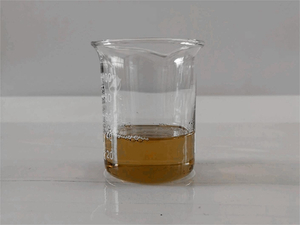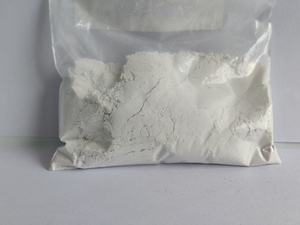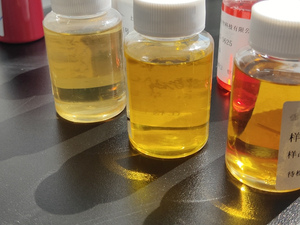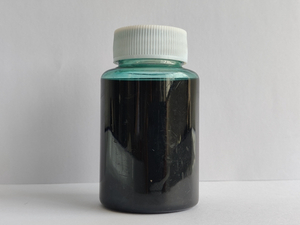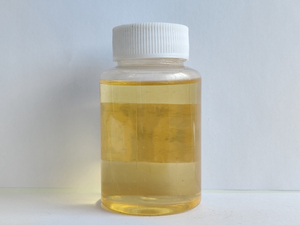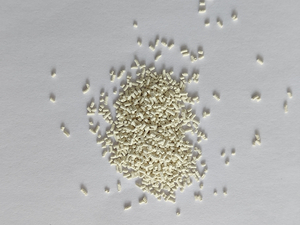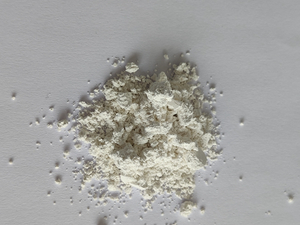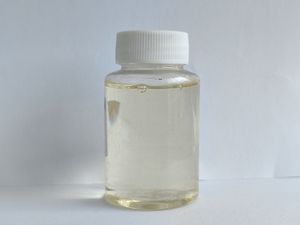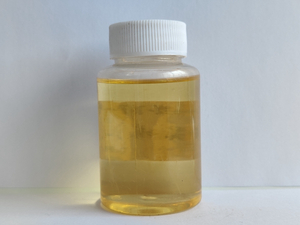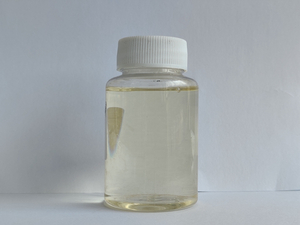1. IDENTIFICATION OF THE CHEMICAL PRODUCT AND COMPANY
Supplier: Shanghai AgroChina Chemical Co., Ltd.
Street address: RM. 1507~1607, Zhengda Plaza, No. 58, Changliu Road, Pudong, Shanghai, R.P. China
FAX: +86 21 35320026
TEL: +86 21 35323666
Product name: Paraquat 20% SL
Product use: Herbicide
2. COMPOSITION/INFORMATION ON INGREDIENTS
Formulation Type: Soluble concentrate
Active Ingredients: Paraquat dichloride
Chemical Abstracts name:
1,1'-dimethyl-4,4'-bipyridinium dichloride
IUPAC name:
1,1'-dimethyl-4,4'-bipyridinediium dichloride;
1,1'-dimethyl-4,4'-bipyridinium dichloride;
1,1'-dimethyl-4,4'-bipyridylium dichloride
Chemical Family: bipyridylium
CAS NO. 1910-42-5; 2074-50-2 bis(methyl sulfate)
Molecular Formula: C12H14Cl2N2
Molecular Weight: 257.2
Structural Formula:
Composition:
INGREDIENT | CAS NO | PROPORTION |
Paraquat dichloride | 1910-42-5; 2074-50-2 bis (methyl sulfate) | 20% Min |
Inert ingredients | Not available | 80% Max |
Inert ingredients determined not to be hazardous
3. HAZARDS INDENTIFICATION
Emergency overview: Clear dark blue liquid with obnoxious odor. Toxic in contact with skin and if swallowed, may cause serious damage to eyes, irritating to respiratory system and skin. May be fatal if swallowed.
Routes of entry: Ingestion, skin and eye contact.
Health hazards:
Ingestion: Paraquat can kill if swallowed. Rapid treatment is essential. The immediate effects of poisoning depend on the dose of paraquat absorbed into the blood. The immediate effects of poisoning usually are abdominal discomfort, soreness and inflammation of the mouth, throat and oesophagus, difficulty in swallowing and later, diarrhoea. Kidney and liver damage may appear 1-3 days after exposure. Lethal poisoning occurs at >40mg paraquat ion/kg body weight and the effects are nausea and vomiting, and can cause death within 48 hours.
Eye: A severe eye irritant. Eye irritation may be delayed. May lead to ulceration of corneal and conjunctival epithelium giving rise to secondary infection. Although healing may be slow, the injury is superficial and with proper medical care will be complete, even in severe cases.
Skin: Contact with skin will result in irritation. Can cause inflammation and severe cases blistering of the skin. Contamination of the nails may cause white spots or in severe cases cracking and loss of the nail. Normal growth follows withour delay. Intact skin is a very effective barrier to paraquat. Damaged skin removes the barrier and paraquat may be absorbed with effects as outlined above under 'swallowed'.
Inhaled: Inhalation of vapour is not likely due to low vapour pressure. Inhalation of spray droplets can result in nose bleeds, irritation and soreness of the throat if trapped in the nasal passage. Inhalation of respirable (very small) spray droplets is unlikely however inhalation of respirable spray droplets can result in pulmonary oedema up to 48 hours after exposure and could prove fatal.
Environmental hazards: Toxic to aquatic organisms.
4. FIRST AID MEASURES
General: Have the product container, label or Material Safety Data Sheet with you when going for treatment. Tell the person contacted the complete product name, and the type and amount of exposure. Describe any symptoms and follow the advice given.
Skin contact: Immediately take off all contaminated clothing. Wash affected area immediately with water and than thoroughly with soap and water. Seek immediate medical attention–speed is essential. Contaminated clothing should be laundered before use.
Eye contact: Immediately flush contaminated eye(s) with water for 20 minutes holding eyelids open. Seek immediate medical attention – speed is essential.
Ingestion: If swallowed, induce vomiting. Do not give anything by mouth to unconscious person. Seek immediate medical attention – speed is essential.
Inhalation: If inhaled remove victim to fresh air. Remove contaminated clothing and loosen remaining clothing. Apply resuscitation if victim is not breathing. Administer oxygen if breathing is difficult. Seek immediate medical attention – speed is essential.
Note to physician: Rapid treatment is essential. Refer to 'Paraquat Poisoning - A Practical Guide to Diagnosis, First Aid and Hospital Treatment' (2003 or later edition) available at most major treatment hospitals and Poisons Information Centres.
Treatment: Wash out stomach and test urine and gastric aspirate (if clear) for presence of paraquat. Give up to 1 litre of 15% aqueous suspension of Fuller's Earth orally or via gastric tube, together with a suitable purgative (200 mL of an aqueous solution of mannitol). Repeat administration of absorbent plus purgative until absorbent is seen in stools. This should normally take between 4 and 6 hours after the start of treatment. Do not use supplemental oxygen. With the possibility of late onset conjunctival ulceration it is advised that patients with paraquat eye injuries are reviewed the day after first presentation. At the review, consideration should be given to treating the eyes with a local antibiotic preparation to prevent secondary infection. Local treatment with a suitable steroid will aid resolution of granulation tissue. Corneal oedema, which may persist for up to 3 - 4 weeks, may cause blurring of vision.
5. FIRE FIGHTING MEASURES
Flash point: Does not burn.
Flammable limits: Does not burn.
Autoignition temperature: Not applicable. Does not burn.
Hazardous combustion products: Decomposition may produce toxic fumes of: carbon dioxide (CO2), hydrogen chloride, phosgene, nitrogen oxides (NOx), other pyrolysis products typical of burning organic material. May emit poisonous fumes.
Extinguishing media: Not Combustible. Use extinguishing media suited to burning materials. Water fog or fine spray is the preferred medium for large fires. Ensure that no spillage enters drains or water courses.
Media to be avoided: None known.
Fire-fighting instructions: If a significant quantity of this product is involved in a fire, call the fire brigade.
Protective equipment for firefighters: Wear full body protective clothing with breathing apparatus.
6. ACCIDENT RELEASE MEASURES
Personal precautions: Wear full protective chemically resistant clothing including eye/face protection, gauntlets and self contained breathing apparatus. Eye/face protective equipment should comprise as a minimum, protective goggles. If there is a significant chance that vapours or mists are likely to build up in the cleanup area, we recommend that you use a respirator. Personal Protective Equipment advice is contained in Section 8 of the MSDS.
Environmental precautions: In the event of a major spill, prevent spillage from entering drains or water courses. Evacuate the spill area and deny entry to unnecessary and unprotected personnel.
Method for cleaning up: Stop leak if safe to do so, and contain spill. Absorb onto sand, vermiculite or other suitable absorbent material. If spill is too large or if absorbent material is not available, try to create a dike to stop material spreading or going into drains or waterways. Because of the toxicity of this product, special personal care should be taken in any cleanup operation. Sweep up and shovel or collect recoverable product into labelled containers for recycling or salvage, and dispose of promptly. Recycle containers wherever possible after careful cleaning. Refer to product label for specific instructions. After spills, wash area preventing runoff from entering drains. If a significant quantity of material enters drains, advise emergency services.
7. HANDLING AND STORAGE
Handling: Read the label before use. Avoid all contact by mouth. Avoid contact with skin and eyes. Do not breath spray. When using do not eat, drink or smoke. Wash face and hands before eating, drinking or smoking.
Storage: Store under lock and key. Keep in original container, tightly closed, out of reach of children. Store in a cool, dry place away from farm feeds and food stuff. Physically and chemically stable for a least 2 years when stored in the original unopened sales container at ambient temperatures. Do not store for prolonged periods in direct sunlight.
8. EXPOSURE CONTROLS/PERSONAL PROTECTION
Exposure limits: TLV for paraquat dichloride is 0,1 mg/m3 (8 hours).
Engineering controls: Maintain adequate ventilation at all times. Keep upwind. Wear a respirator if there is a risk of inhaling the mist. Local exhaust ventilation system is recommended if a mist is formed in an enclosed area.
Personal protective equipment (PPE):
Wear protective equipment during manufacturing, mixing of concentrate and application.
Respiratory: in case of insufficient ventilation, wear adequate respiratory protection.
Hands: gloves of synthetic material.
Eyes: safety goggles or safety shield.
Skin and body: wear suitable protective clothing, e.g. cotton overalls and boots. Wash exposed skin areas,
face and hands after handling.
9. PHYSICAL AND CHEMICAL PROPERTIES
Appearance: Clear dark blue liquid.
Odor: Obnoxious odor.
Vapor pressure: Negligible for Paraquat, product will have the Vapor pressure of water.
Boiling point/range: 100+ ºC (water)
Melting/freezing point: Approx 0 ºC (water)
Solubility: Fully miscible with water.
Specific gravity/density: Approx 1.1
10. STABILITY AND REACTIVITY
Chemical stability: Stable under normal conditions.
Conditions to avoid: High temperature (preferably < 30 ºC).
Hazardous decomposition: Should not decompose unless heated further after reaching complete dryness. May then produce carbon monoxide, nitrogen oxides, hydrogen cyanide and/or hydrogen chloride.
Incompatible materials: Metal containers especially zinc, aluminium.
Hazardous reactions: Hazardous polymerization will not occur.
11. TOXICOLOGICAL INFORMATION
Acute toxicity:
Oral: LD50 for male rats 707 mg/kg, female rats 612 mg/kg.
Dermal: LD50 for male rats 590 mg/kg, female rats 735 mg/kg.
Inhalation: Nose bleeding and soreness of the throat may result from spray mist or dust trapped on the nasal mucosa. If this occurs review spraying and handling technique.
Irritant properties:
Skin: Moderate irritant to rabbit skin.
Eye: Moderate irritant to rabbit eyes.
Allergenic and sensitizing effects: Not considered to be a skin sensitizer (Guinea pig).
12. ECOLOGICAL INFORMATION
The following information is for the active ingredient, paraquat dichloride .
Ecotoxicity:
Birds Acute oral LD50: for bobwhite quail 175, mallard ducks 199 mg/kg.
Dietary LC50 (5 days): for bobwhite quail 981, Japanese quail 970, mallard ducks 4048, ring-necked pheasant 1468 mg/kg.
Fish LC50 (96 h): for rainbow trout 26, mirror carp 135 mg/l.
Daphnia EC50 (48 h): 6.1 mg/l.
Algae EC50 (96 h): 0.10 mg/l.
Bees LD50 (oral): 36 μg/bee
LD50 (contact): 150 μg /bee
Earthworm: LC50 (14 days): >1380 mg/kg soil.
Persistence and degradability: Slowly degraded by soil micro-organisms.
Bioaccumulative potential: Low. Is either acutely toxic or rapidly excreted.
Mobility in soil: Immobile in soil. Soluble in water, but absorbed by suspended clay (mud).
13. DISPOSAL CONSIDERATION
Product: Whenever possible, product should be used for its intended purpose, even if reclaimed from spillage (reclaimed product must be uncontaminated).
Containers: Whenever possible, follow directions given on container. If not available, triple or pressure rinse containers before disposal. Recycle containers if possible (replace cap and return clean containers to recycler or designated collection point). Treat rinsings as for product above. If not recycling, break, crush or puncture and bury empty containers in a local authority landfill. If no landfill is available, bury the containers below 500 mm in a disposal pit specifically marked and set up for this purpose clear of waterways, desirable vegetation and tree roots. Empty containers and product should not be burnt.
Sewage: Do not dispose of product or rinsings into sewage systems or septic tanks.
Absorbent material used for spillage collection should be buried in an approved landfill.
14. TRANSPORT INFORMATION
UN Number: 3016
UN Proper shipping name: BIPYRIDILIUM PESTICIDE, LIQUID, TOXIC
Transport hazard class: 6.1
Packing group: III
Do not load with explosives, nitromethane, oxidising agents, organic peroxides, corrosive acids, food or food packaging.
15. REGULATORY INFORMATION
Hazard symbols:
T+ - Very Toxic
N - Dangerous for the Environment
Risk phrases:
R21/22 - Harmful in contact with skin and if swallowed.
R26 - Very toxic by inhalation.
R36/37/38 - Irritating to eyes, respiratory system and skin.
R48/25 - Toxic: danger of serious damage to health by prolonged exposure if swallowed.
Safety phrases:
S1/2 - Keep locked up and out of reach of children.
S22 - Do not breathe dust.
S28 - After contact with skin, wash immediately with plenty of... (to be specified by the manufacturer).
S36/37/39 - Wear suitable protective clothing, gloves and eye/face protection.
S45 - In case of accident or if you feel unwell, seek medical advice immediately (show the label where possible).
S60 - This material and its container must be disposed of as hazardous waste.
S61 - Avoid release to the environment. Refer to special instructions/Material Safety Data Sheets.
16. OTHER INFORMATION
This MSDS summarizes our best knowledge of the health and safety hazard information of the product and how to safely handle and use the product in the workplace. Each user should read this MSDS and consider the information in the context of the how the product will be handled and used in the workplace including in conjunction with other products.
If clarification or further information is needed to ensure that an appropriate risk assessment can be made the user should contact the company.
END OF MSDS










